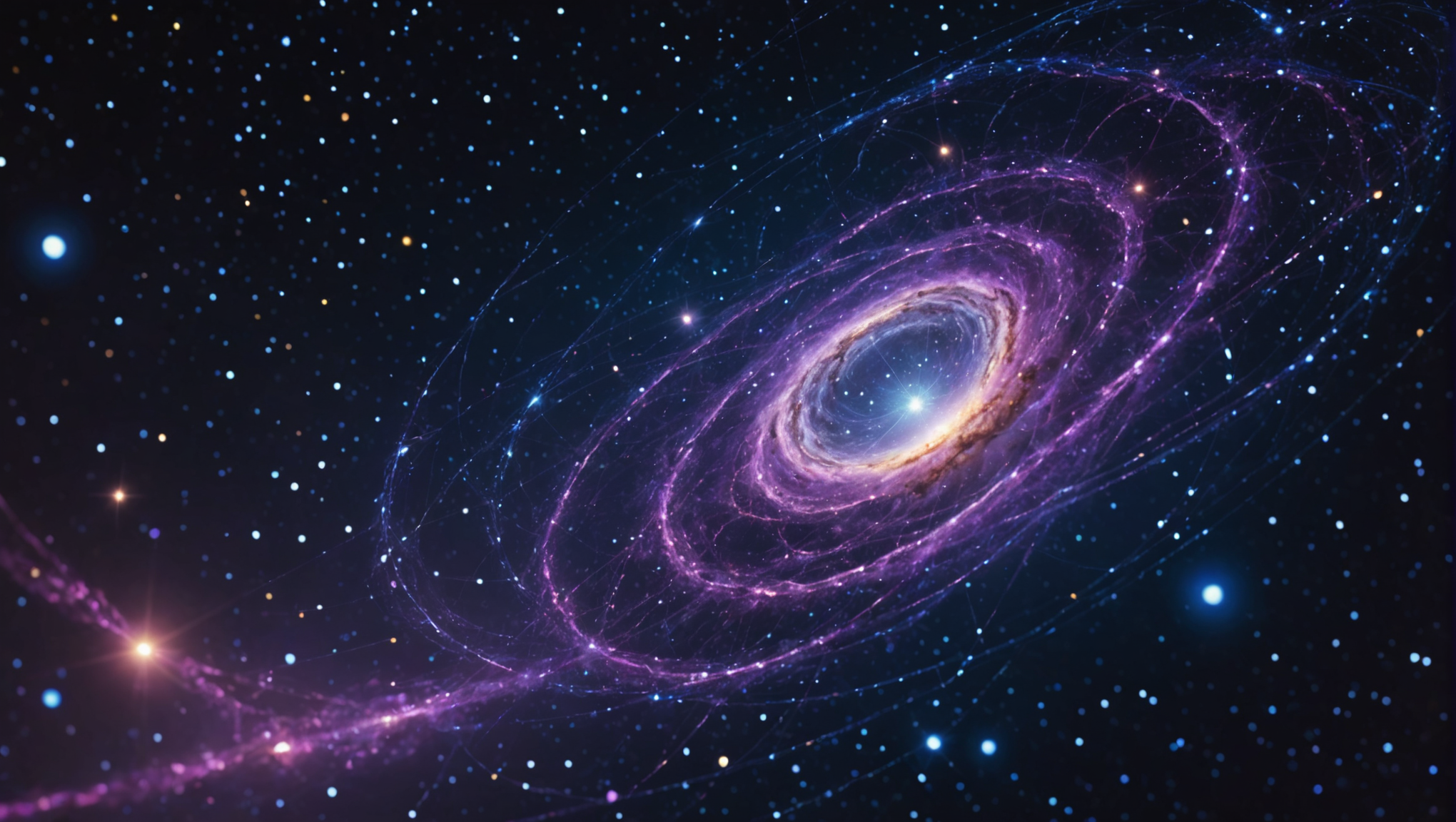Exploring the Cosmic Unknown

Beyond The Observable Universe
As we embark on the quest to explore the cosmos, we are confronted with the daunting yet mesmerizing idea that the universe is not just a vast emptiness to be filled. Instead, it is an ever-expanding frontier that constantly pushes the limits of our understanding. Imagine a space that stretches beyond what we can observe, a realm defined by celestial entities residing beyond our observational reach. It is a realm where the light from distant galaxies hasn’t even had the time to reach us, forming a cosmic barrier we can only theorize about.
The idea of the observable universe confines us to an area approximately 93 billion light-years in diameter, a bubble encapsulated by the speed of light and its relentless march through time. Within this vast expanse, billions of galaxies twinkle, each packed with stars, planets, and the intricate web of cosmic phenomena. Yet, the further we gaze, the more we find ourselves grappling with a groundbreaking question: What lies beyond our observable horizon?
To comprehend the intricacies of what exists beyond, we must first delve into the mechanics of cosmic expansion. Every second, the universe unfurls itself, a ballet of galaxies receding from one another as a consequence of the Big Bang—an event that birthed space and time as we know them. This expansion is not uniform; it’s accelerating, propelled by the mysterious force known as dark energy, which constitutes approximately 70% of the universe’s content. While we may never directly observe what is beyond the observable universe, the effects of dark energy showcase its influence on the rate of expansion itself. Are we at the edge of a much grander cosmic structure? Could there be regions of the universe that are fundamentally different from our own? These tantalizing questions coax us into contemplating the impossibility of comprehending infinity.
Many cosmologists entertain the notion of a multiverse—a vast collection of separate “universes” or “bubbles” that might differ in their physical constants, dimensions, and even the fundamental laws of nature. In this context, the visible universe is merely one among potentially countless others, each with its unique properties. Imagine a parallel universe where the forces of physics operate differently, enabling entirely new forms of matter and life as we cannot begin to imagine. This radical theory not only challenges our understanding of existence but also introduces a playful curiosity that continuously drives scientific inquiry. If we are just one part of a grand cosmic stage, what could other universes reveal about the underlying fabric of reality?
Mathematical models, such as those associated with cosmic inflation theory, support the possibility of this multiverse scenario. During inflation, the universe expanded exponentially during its early moments, smoothing out irregularities in the cosmic fabric while creating a multitude of bubble-like universes. These models propose various outcomes, each governed by slightly different constants leading to developments that can produce hallmarks of life or entirely lifeless voids. Within the structures of this multiverse, it is conceivable that there exists an infinite number of worlds configured uniquely, some potentially teeming with life while others remain desolate, devoid of any such complexity.
However, this journey to the edge of the universe and beyond is fraught with uncertainties. As we develop advanced observational technologies such as the James Webb Space Telescope and other next-generation observatories, our understanding will continue to evolve. These powerful instruments may one day blur the lines between what is observable and what is not, pulling back the curtains to reveal mysteries long thought hidden.
Ultimately, as we push the boundaries of knowledge, we face philosophical dilemmas about our place within this cosmic labyrinth. Are we alone in a universe so expansive that it seems designed for isolation, or do countless civilizations thrive in the uncharted territories of existence? Each insight into the nature of the universe pushes us further into the quest of not only seeking to understand what lies beyond the observable universe but also contemplating our connectivity within it—challenging our grasp of time, space, and the very essence of being.

The Enigma Of Dark Matter And Dark Energy
The quest to understand dark matter and dark energy is not just an intellectual exercise; it acts as a gateway into some of the most profound mysteries of the universe. While our everyday experiences tether us to the tangible world, the realms of dark matter and dark energy invite us to explore the abstract, challenging our perception of reality and our understanding of the cosmos itself.
Dark matter, which constitutes approximately 27% of the universe, remains one of the great enigmas in contemporary astrophysics. It does not interact with light, rendering it invisible and detectable only through its gravitational effects on visible matter. Observations of galaxies reveal that the stars at their peripheries rotate at much higher speeds than could be accounted for by the mass we can see alone. This discrepancy has led scientists to propose the existence of a halo of dark matter enveloping galaxies, a substance that holds them together without emitting any detectable energy of its own.
To uncover the properties of dark matter, scientists employ a variety of methodologies. Gravitational lensing, for instance, takes advantage of the way light bends around massive objects. When light from a distant galaxy passes near a foreground object, such as a galaxy cluster, the light is distorted, providing insight about the gravitational influences at play. By analyzing these lensing effects, astronomers can infer the mass distribution within the galaxy cluster. These studies reveal that dark matter forms a web-like structure throughout the universe, influencing the formation and behavior of galaxies across vast cosmic scales.
In parallel, dark energy poses an equally compelling mystery, encompassing roughly 68% of the universe’s total energy content and acting as the driving force behind the accelerated expansion of the cosmos. Initially discovered through observations of distant supernovae, dark energy’s strange influence complicates our understanding of gravity, forcing scientists to reconsider established cosmological paradigms. This mysterious energy, often likened to a repulsive force, appears to accelerate the separation of galaxies, defying the attractive force of gravity that would typically draw them closer.
The properties of dark energy remain elusive, shrouded in uncertainty. Current models often incorporate the idea of a cosmological constant, a concept introduced by Albert Einstein but largely dismissed in his time. Yet, numerous observations suggest that this constant may hold the key to explaining the influence of dark energy on our universe’s expansion. As new data emerges, scientists work diligently to unravel dark energy’s nature, challenge its implications, and provide a clearer understanding of the ultimate fate of the cosmos.
Both dark matter and dark energy bring forward myriad questions about the composition of the universe. What are their true natures? How do they interact with ordinary matter? Are they an integral part of our universe’s architecture, or do they hint at phenomena beyond the current realms of physics? As researchers develop more sophisticated experiments and observational techniques, the hope is that they can better characterize these enigmatic forces, offering insights into their roles in cosmic evolution and their fundamental characteristics.
Each new discovery related to dark matter and dark energy thus leads us to the brink of knowledge, transforming our cosmological models and revealing the intricacies of the universe. The understanding that 95% of the universe is comprised of these elusive components calls into question not only the workings of the universe but also our fundamental understanding of space and time. The investigative journey surrounding dark matter and dark energy challenges the realms of philosophy, pushing us to rethink our perceptions of reality and our place within the cosmic tapestry.
As the mysteries of dark matter and dark energy unfold, we find ourselves faced with a tantalizing conundrum: that we are at the threshold of unveiling the very essence of existence itself, where each new piece of knowledge leads us deeper into the unknown, inviting us to explore the boundless complexities that define our universe—a universe that, much like the dark matter and energy it contains, holds secrets yet to be revealed.

Life In The Cosmos: Possibilities And Theories
As we probe the depths of the cosmos, the tantalizing prospect of life beyond our pale blue dot ignites a sense of wonder and fuels scientific inquiry. For centuries, the idea of extraterrestrial life has fascinated humanity, stirring imaginations and prompting significant philosophical questions. The more we learn about the universe, the clearer it becomes that we are not merely passive observers; we are active participants in an expansive and intricate web of existence. Imagine a universe where life could thrive in myriad forms, nestled within the orbit of distant stars, or even in environments that seem inhospitable by Earthly standards.
The discovery of extremophiles—organisms that flourish in extreme conditions on Earth—has reshaped our understanding of what it means to be alive. These remarkable creatures survive in environments characterized by extreme temperatures, acidity, radiation, and pressure. From hydrothermal vents on the ocean floor to the frozen tundra, extremophiles demonstrate remarkable adaptability and resilience, suggesting that life can exist in environments previously deemed uninhabitable. This insight leads us to reimagine the potential for life in our solar system and beyond; if life can endure in such harsh conditions on Earth, could it similarly thrive on planets or moons with extreme environments?
Mars, a neighboring world with a history of liquid water, has emerged as a primary target in the quest to find life beyond Earth. Robotic missions such as the Curiosity Rover and Perseverance have unveiled evidence of ancient riverbeds, lakes, and potentially habitable conditions. These findings excite scientists and fill us with the hope that microbial life once thrived on the Martian surface. What had previously seemed like barren landscapes now tell a story of a planet that might have hosted life, raising profound questions about its past and the possibility of its return. As our technology advances, we turn our gaze toward the icy moons of the gas giants, particularly Europa and Enceladus. here, beneath thick crusts of ice, lie subsurface oceans that may harbor the essential ingredients for life. The potential for hydrothermal vents on their ocean floors hints at a wealth of chemical energy, creating environments that could support life forms akin to those found in Earth’s most extreme habitats.
Beyond the boundaries of our solar system, the discovery of exoplanets has fundamentally altered our understanding of the universe. Thousands of these distant worlds have been identified, many residing within the habitable zone of their stars—the region where conditions may allow for liquid water. Planets such as Kepler-186f and Proxima Centauri b have sparked curiosity and research focused on their atmospheric compositions. The study of their climates, geology, and potential bio-signatures is revealing whether the fundamental conditions for life exist beyond our Earth.
Yet the search for extraterrestrial life is not without its challenges. The vast distances separating us from potential life-hosting worlds complicate direct exploration. Scientists leverage advanced techniques, such as spectroscopy, to analyze the atmospheric compositions of exoplanets remotely. By studying the spectrum of light that filters through a planet’s atmosphere, researchers hunt for essential gases such as oxygen, methane, and carbon dioxide. These molecules could indicate biological processes akin to those we observe on Earth, offering tantalizing clues about the potential for life.
Amid these thrilling discoveries, considerations of what constitutes life loom large. We tend to think of life through the lens of our biological systems—carbon-based, water-dependent, and reliant on chemical energy. However, as our understanding expands, we acknowledge that alien life forms might emerge under drastically different conditions, potentially using entirely new biochemical processes. This expands the search parameters, encouraging scientists to investigate a wider spectrum of possibilities, such as silicon-based life forms or organisms that thrive on methane instead of oxygen.
The implications of discovering extraterrestrial life extend beyond mere curiosity. Such a discovery would challenge our perceptions of life’s uniqueness on Earth, potentially altering philosophies that define humanity’s role within the cosmos. The very notion of intelligent extraterrestrial civilizations prompts profound ethical questions: How would we interact with them? What responsibilities would we carry as explorers? How would our understanding of consciousness evolve in the light of potential sentient beings?
As the journey to uncover the mysteries of life in the cosmos unfolds, we are drawn into an intricate dance that interconnects the fate of our planet with distant worlds, inviting us to ponder not only the nature of life itself but our connection to the universe as a whole. Each new discovery brings us a step closer to answering enduring questions, paving the way for unfolding narratives about existence and awareness—challenges that ultimately shape who we are as a species.
The Future Of Cosmic Exploration And Its Implications
The future of cosmic exploration is poised to usher in a new era of understanding, unlocking the innermost secrets of the universe and potentially redefining our place within it. As technological advancements accelerate, the scope of our missions expands from the familiar territories of our solar system to the farthest reaches of the cosmos. We are entering a time when humanity’s quest to explore other worlds is not merely about observing celestial bodies but fundamentally reshaping our comprehension of life, existence, and the intricate dance of cosmic forces.
Upcoming missions promise ambitious endeavors aimed at unveiling the mysteries of our neighboring planets and moons. Mars, with its storied past of liquid water and tantalizing signs of potential life, is a central focus. The Mars Sample Return mission, set to bring Martian soil and rock samples back to Earth, is anticipated to answer pivotal questions about the planet’s capacity to host life and the geological processes that have shaped its surface. The data gleaned from these samples will provide scientists with invaluable insights into the history of water on Mars and any biological markers that may exist, further illuminating our understanding of what it means to be a habitable planet.
Meanwhile, the Europa Clipper mission is gearing up to explore one of Jupiter’s most intriguing moons. Beneath its icy crust lies a vast ocean, which may be in contact with a rocky seafloor, creating conditions reminiscent of Earth’s deep-sea hydrothermal vents—environments known for thriving ecosystems. This mission aims to investigate Europa’s potential habitability through a suite of advanced instruments that will analyze the moon’s surface, atmosphere, and potential plumes of water vapor. With each passing mission, Europa unfolds as a promising location for discovering life beyond Earth, reinforcing the idea that we are not alone in our quest.
In addition to missions focusing on Mars and Europa, the Dragonfly project aims to explore Titan, Saturn’s largest moon, which captivates our imagination with its dense atmosphere and lakes of liquid methane. This unique environment offers an opportunity to study prebiotic chemistry that might resemble the early conditions on Earth. Using an innovative rotorcraft design, Dragonfly will traverse Titan’s diverse landscapes, conducting in-situ analyses to unveil the moon’s secrets. Each of these missions not only deepens our understanding of the solar system but also feeds the curiosity about life’s potential across varied environments.
The advancement of telescopes equipped for exoplanet exploration, such as the James Webb Space Telescope, will redefine our perspective on distant planetary systems. By analyzing the atmospheres of exoplanets that exist outside our solar system, we seek to identify the chemical signatures of potential life. Instruments designed to detect biosignatures will help delineate which of these worlds might harbor conditions favorable for life. As thousands of exoplanets have been cataloged, the excitement around identifying Earth-like worlds only intensifies, positioning our planet within a broader cosmic context.
However, these tantalizing opportunities for discovery come with profound implications. The philosophical and ethical dimensions of our cosmic exploration are becoming increasingly salient. As we push the frontiers of understanding and technology, questions about our role as stewards of our planet and others arise. What responsibilities do we carry as we venture onto celestial bodies that may harbor life or have the necessary ingredients for life? The prospect of colonizing Mars or extracting resources from asteroids invites a thoughtful dialogue about sustainability and our ethical obligations to these untouched environments.
Exploration thus transforms into a balancing act—a pursuit of knowledge that inspires awe and curiosity while urging us to act responsibly in the face of our discoveries. International collaborations, such as those seen in various space exploration initiatives, illustrate the desire to foster shared knowledge, cultural exchange, and cooperative efforts that transcend national borders. Such unity can spur innovation while simultaneously addressing monumental global challenges, reinforcing the interconnectedness of our planet and the universe we inhabit.
As we delve into the cosmos, we confront a fundamental reality: every piece of knowledge gained raises new questions and challenges old assumptions. The synergy of science and philosophy invites us to rethink our purpose and identity, spurring an unprecedented era of cultural and intellectual revolution. The exploration of the stars becomes a collective endeavor—a journey not just into the cosmos but into the very essence of being and the profound relationships that connect us all.
The future of cosmic exploration holds an extraordinary promise that will stretch our imaginations beyond the confines of Earth and challenge us to embrace the unknown. It is a powerful reminder that as we look to the stars, we are not merely seekers of knowledge; we are architects of our destiny—individuals propelled by curiosity and courage, striding into a universe filled with infinite possibilities and mysteries yet to be uncovered.